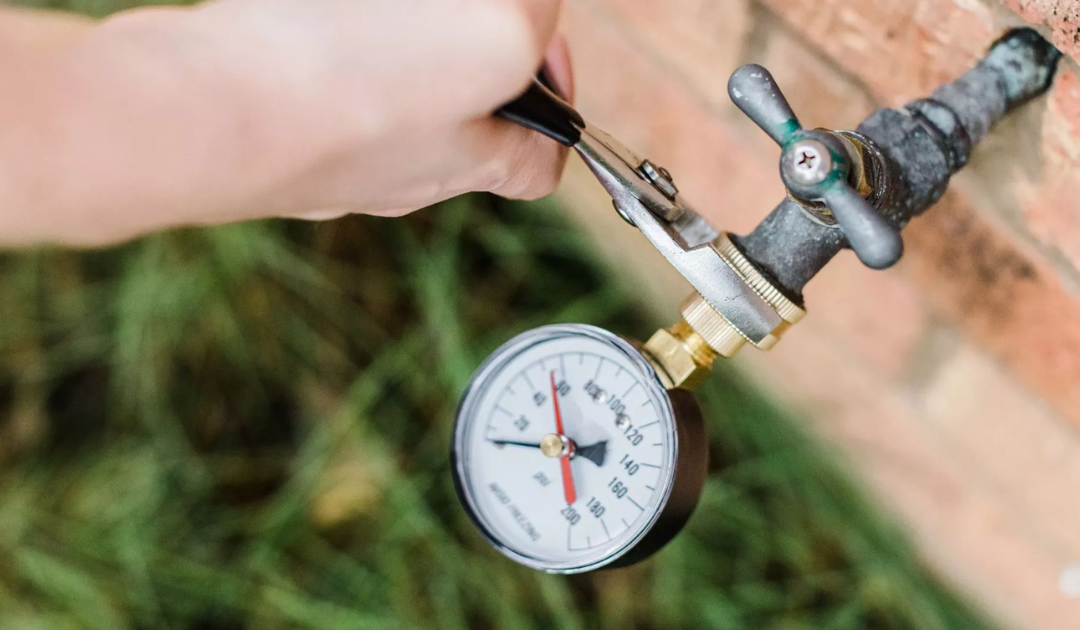Clear Techniques for Dealing with Low Water Pressure in Your Home
Clear Techniques for Dealing with Low Water Pressure in Your Home
Blog Article
On this page in the next paragraphs you'll find some exceptional points in regards to 9 Reasons for Low Water Pressure in Your House.

Low water pressure in your house can be a discouraging trouble, affecting every little thing from bathing to cleaning recipes. If you're experiencing weak water circulation, there are a number of feasible reasons and solutions to explore. In this overview, we'll review common factors for low water pressure and practical steps to resolve the issue efficiently.
Introduction to Low Tide Stress
Low tide stress occurs when the flow of water from your taps, showers, and various other fixtures is weak than typical. This can make everyday tasks much more challenging and much less efficient. Understanding the reasons for low water stress is critical to discovering the appropriate service.
Typical Causes of Low Water Stress
Faulty Stress Regulatory Authorities
Stress regulatory authorities are responsible for preserving consistent water stress in your house. If they malfunction, it can lead to low tide pressure or uneven circulation throughout your home.
Metropolitan Water System Issues
Sometimes, the trouble lies outside your home. Municipal water supply problems, such as main line leaks or upkeep job, can briefly reduce water pressure in your location.
Pipe Obstructions
With time, pipes can come to be blocked with mineral deposits, debris, or particles, limiting the circulation of water. This is a common issue in older homes with galvanized steel pipes.
Rust
Rust within pipes can cause leaks and decreased water pressure. Corrosion buildup can tighten water circulation, specifically in aging plumbing systems.
How to Detect Low Tide Stress
Examining Pipelines
Check visible pipelines for indications of leaks, corrosion, or obstructions. Pay attention to any uncommon sounds, such as knocking or rattling pipelines, which might show problems within the plumbing system.
Consulting with a Plumber
If you're incapable to identify the root cause of low water pressure, think about working with a professional plumber to conduct an extensive examination. They can determine underlying concerns and suggest suitable options.
Inspecting Faucets and Components
Beginning by evaluating the water pressure at various faucets and components throughout your home. If the problem is separated to certain locations, it may suggest local issues.
Do It Yourself Solutions to Repair Low Water Stress
Flushing Water Heater
Sediment accumulation in the water heater can limit flow and minimize efficiency. Purging the tank occasionally helps get rid of sediment and preserve optimum efficiency.
Inspecting Stress Regulatory Authority
Guarantee that the stress regulatory authority is operating properly. Changing or replacing the regulatory authority can assist recover proper water stress throughout your home.
Cleaning Aerators and Showerheads
Mineral deposits can build up in aerators and showerheads, reducing water circulation. Eliminate and clean up these components on a regular basis to improve water stress.
Clearing Clogs in Water Lines
For minor obstructions, try using a plumbing snake or chemical drain cleaner to clear blockages in pipelines. Beware when utilizing chemicals and adhere to safety guidelines.
When to Call a Specialist Plumber
If do it yourself efforts stop working to resolve the problem or if you believe significant plumbing issues, it's finest to seek help from a licensed plumber. They have the know-how and devices to resolve complex concerns securely and properly.
Safety Nets to Preserve Water Pressure
Installing a Stress Booster
Take into consideration setting up a stress booster pump to boost water stress in areas with constantly low flow. This can be especially useful for multi-story homes or homes with high-demand components.
Surveillance Water Usage
Be mindful of water usage routines and avoid ill-using the plumbing system. Easy adjustments, such as incredible showers and washing loads, can help keep adequate water pressure.
Regular Maintenance
Schedule routine maintenance for your plumbing system to prevent problems such as rust, leaks, and blockages. Attending to small troubles early can aid avoid more considerable repairs later on.
Final thought
Managing low tide stress can be frustrating, yet recognizing the underlying causes and implementing ideal remedies can restore optimum flow throughout your home. Whether it's cleansing aerators, evaluating pipes, or consulting with a plumber, taking positive actions can guarantee a steady supply of water for your day-to-day requirements.
FOUR WAYS TO FIX LOW WATER PRESSURE NOW
Turning on a shower or faucet only to find the water comes out in a sad, slow drizzle is never a good feeling. How exactly are you supposed to wash a pan or take a quick shower when it takes 10 minutes just to rinse off a little soap? The good news is that when your water pressure is bad, there's always a cause: typically one that can be easily fixed. Here are some of the most common causes of low pressure and what you can do to fix the issue:
DEBRIS AND MINERAL DEPOSIT BUILDUPS
If you notice low water pressure from just one or two of the fixtures in your house, the problem likely has to do with debris buildup. Water is full of minerals and other debris, all of which can accumulate in your pipes and on your fixtures. This can cause a blockage that affects how much water flows through. To fix this, try filling a small plastic bag with white vinegar, and use a rubber band to hang it around your showerhead or faucet. Let the head of the fixture soak for a few hours, and the vinegar should loosen the deposits.
WATER LEAKS
Leaks are another common cause of low water pressure. If water is flowing out of your plumbing through a hole or crack before it can reach your fixture, the pressure coming out of the faucet or showerhead will be lower. A plumbing professional is your best bet for finding and repairing a leak in your water supply pipes.
Leaks are another common cause of low water pressure. If water is flowing out of your plumbing through a hole or crack before it can reach your fixture, the pressure coming out of the faucet or showerhead will be lower. A plumbing professional is your best bet for finding and repairing a leak in your water supply pipes.
A VALVE ISSUE
If you have low water pressure throughout your home, check your main shut-off valve to make sure it's completely open. You may also want to see if there's a pressure-reducing valve installed. If there is, have a plumber help you adjust the settings to get the pressure you're looking for.
OTHERS USING WATER
Believe it or not, your low water pressure could be caused by your neighbors. If you notice low pressure at certain times of day, it may be because you and the people living next to you have similar schedules - when everyone is showering at the same time, the pressure will be lower in every home. Low pressure throughout the neighborhood may also be caused by an issue with your municipal water supply. If that's the case, call the supplier to see if they're working on the issue.
https://www.rotorooter.com/blog/water-leaking/low-water-pressure-fixes/

We hope you enjoyed reading our section on Dealing with Low Water Pressure in Your Home. Thanks so much for finding the time to read our blog. Are you aware of somebody who is fascinated by the subject? Do not hesitate to promote it. I cherish your readership.
Book Report this page